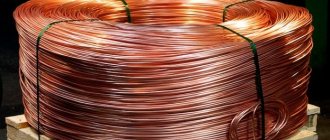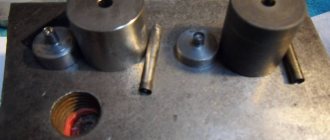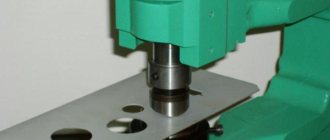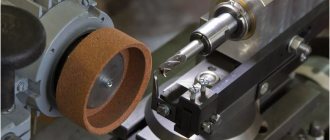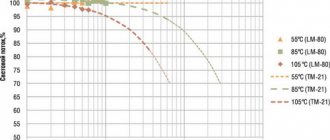Plexiglas with edge lighting or, as it is called, a matrix for edge lighting is the basis of most LED products produced by software (that is, software - a set of programs for computers and computing devices)
"LedexPro". It is the main component of single- and double-sided light panels and lighting fixtures, from indoor to outdoor.
The development and in-house creation of the matrix allowed the company to become one of the largest Russian manufacturers in less than two years. And at the moment the company supplies its products to such significant companies in the country as Sberbank, VTB24 Bank, Rostelecom and Megafon.
Principle of action
The operation of the edge illumination matrix is based on Snell's law, according to which light falling on the interface between media at an angle less than critical does not come out, but is completely reflected from the interface. The largest angle at which total internal reflection can occur is called Brewster's angle and for acrylic it is 42°.
Development
In our case, this means that without applying light-scattering parts - microlenses - to the surface of the plexiglass, the plexiglass remains dark. Thus, the matrix is a sheet of acrylic glass with microlenses applied to it.
Application occurs using a three-dimensional laser engraving method - 3D V-engraving, which ensures the highest accuracy and uniformity of the arrangement of parts of the design.
The light supplied to the material from the end of the product from a line of LEDs is repeatedly reflected from both front faces, coming out only when refracted by microlenses. And thanks to their uniform application, it creates a smooth, luminous surface.
To increase the efficiency of the system, reflective material is installed on the back side, and light-diffusing material is installed on the front side.
Types of matrices
Software (that is, software - a set of programs for computers and computing devices)
LedexPro produces two types of matrices - LedexLight Universal (UNI) and LedexLight Individual (IND)
LedexLight UNI has the usual dimensions - 1200x2050 mm and a thickness of 3, 4 or 6 mm. The main area of implementation is lighting marketing panels and decorative lighting. The matrix is made on the basis of acrylic glass and can be used in a temperature range from -40° to +60°C.
Distinctive features of LedexLight UNI are:
- Uniform glow even with small thickness.
- Highest brightness.
- Low cost.
Unlike LedexLight UNI, LedexLight IND is used in those cases when it is necessary to make products with high lighting characteristics. Its main difference is a special engraving sketch that is selected depending on the size, thickness and type of a particular product.
LedexLight IND is mainly used for the production of lighting fixtures, as well as products with unusual shapes. Compared to a universally suitable matrix, a matrix manufactured to personal order has a number of advantages:
- The efficiency of such a matrix can reach 90%, which is more than that of a universal one.
- Thanks to the personalized engraving design, its brightness is higher.
- The illumination over the entire area is completely uniform and does not depend on thickness and size.
- Random thickness.
- Lack of analogues on the Russian market.
Company
Having placed the creation, warehouses and office on the territory of the capital, software (that is, software - a set of programs for computers and computing devices)
LedexPro allows you to purchase products based on LED technology and components for their production in Moscow at manufacturer prices.
Using Russian acrylic when producing matrices for end illumination, the company does not depend on third-party supplies. This guarantees constant prices and compliance with deadlines for the production and delivery of batches of any size. And for large orders, volume discounts are available.
Advertising must be elegant!
offers ordering thin crystal light panels at affordable prices with delivery throughout Moscow, the region and all of Russia.
If you ask us what effective advertising should be, we will answer - different. The effectiveness of advertising depends on many factors: purpose, conditions and, last but not least, on the person’s perception of it. For example, a street sign is designed to notify customers about promotions and special offers and is placed in the immediate vicinity of a cafe or store. Thin crystal Premium light panels work differently, as they are most often part of the display design of stores in Moscow shopping centers.
How to design plexiglass for edge lighting
In the interior, edge lighting is used for several reasons. Firstly, it looks special, creating a confused light flow. Secondly, this solution is convenient: it is possible to organize high-quality lighting that consumes a minimum of electrical energy. And the final argument is a combination of aesthetics and functionality.
Edge lighting can provide a pleasant atmosphere in the home
Illumination of canvases is used in tandem with the following designs:
- ceiling panels;
- false windows or framelights;
- kitchen apron panels;
- shelves;
- handrails of stairs, etc.
Almost any idea can be realized.
Individuality of false windows
The design of end lighting in combination with a false window is now popular. Framelight is a panel where a poster with an illustration is placed. Any landscape, photo or painting takes on a new look. In addition to its decorative function, additional lighting provides a unique panel.
The system is delivered ready-made; the user needs to insert a poster with an image. Often, imitation of the view from a window, various landscapes, and photographs are used as drawings.
The poster can be easily changed at any time. The summer street will simply change into an autumn park or winter forest. Framelights are easy to use because they have a click profile. Because of this, the upper part snaps off and the protective module is removed. A variant with a “Magnetic” design is also used. Its system uses magnets to secure the canvas.
With the help of a false window you can imitate any view from the window that you desire
Step-by-step instruction}
Designing glass for edge lighting is within the capabilities of any homeowner. About the features of the process in order:
- We cut out a light panel of suitable sizes and shapes from plexiglass. To do this, we use a hacksaw, jigsaw, etc.
- We process the edges and make a recess at the end for the LED components.
- We apply the sketch to self-adhesive paper and glue it to the canvas.
- Using a scalpel, cut out the outline.
- Using an electronic drill, we engrave the glass along the intended strip.
Interesting read: DIY plexiglass glue
Now you need to assemble the circuit. We take the LEDs and solder them to their positive terminals via a resistor. We insulate the contacts with heat shrink. Using acrylic glue, we attach the LEDs to the end holes of the canvas. To check the serviceability of the system, we connect the pluses and minuses along the wires and attach them to the battery holder.
The result is a good night lighting device, assembled independently.
You can create a beautiful lighting fixture from plexiglass if you follow the instructions
Materials and tools
Have you decided to create end lighting yourself? Make sure everything you need is at hand:
- acrylic canvas;
- aluminum profile;
- LED Strip Light;
- small 12V power supply.
If the panel must be placed in a room with high humidity, a special tape is needed. Are you considering a false window as an auxiliary light source? Then you will need an LED strip with increased performance.
Tools usually include a hacksaw, an electronic jigsaw, a drill, fastening components, etc.
To operate the plexiglass lighting fixture, you will need a 12V power supply.
Acrylic preparation
It is important to ensure uniform illumination of the panel. We will need acrylic of the highest quality. A balanced, rich glow is guaranteed by diffuse components. They appear in acrylic sheets during its special preparation. It is impossible to carry out such processing at home, therefore it is necessary to obtain a ready-made canvas that meets all the characteristics. The thickness of the plexiglass is determined taking into account the dimensions of the light panel.
The ends in acrylic fabric must be polished. In the piece where there are no LED components, we apply reflective material. During production, acrylic is covered with a protective film. It prevents damage to the canvas and redistribution of light. Remove the film before installing the structure in the profile.
Profile assembly
The components of a duralumin profile are at your disposal. We cut them to the required sizes at an angle of 45°. Then we connect the parts using the corners. Three sides are ready, now we are installing LED components throughout the entire interior. We connect the wires in advance to ensure contact with the power supply. The 12V adapter is capable of providing energy to a tape up to 5 m long. We screw at least 4 fasteners to the upper part of the profile for future installation on the wall.
Aluminum profiles for false windows must be strengthened at an angle of 95°
Working with the light panel
Three sides of the profile are assembled and the LED components are secured, we begin the installation of the light panel. We need a reflector - a sheet that reflects light. Let's add it to your profile. We also add an acrylic sheet, a film with an image, and a protective coating to the system. We install the canvas above the LED components. This promotes excellent light dispersion. At the end we attach the last side of the profile.
A fundamental aspect: the poster must be printed on backlit film - this way good light transmission is achieved. To make the system as solid as possible, a backdrop of sufficient width is inserted into it.
Wall installation
The light panel is ready, now you need to secure it. Hooks are installed to the wall using dowels. All that remains is to hang the false window and connect the power supply.
Using ordinary technologies, you can create a modern design in any room on your own. Acrylic edge lighting will create an atmosphere of comfort and perform a convenient function as needed.
Decor Tree plexiglass lamp for the Mega Belaya Dacha shopping center
When creating any interior elements for retail space, attention is first paid to the durability of the material, its resistance to mechanical damage and unstable environmental conditions. In this regard, the leading position in recent years has been occupied by acrylic - an economical, durable material that can be easily thermoformed and thus is designed to bring to life all the creative ideas of creative designers.
An important advantage of acrylic is also its decorative appeal - transparency, shine, exceptional light transmission and surface smoothness.
Among the most daring and breathtaking design solutions made from acrylic, it is worth noting installations made from acrylic rods
Additional equipment of such products with powerful LED lighting makes them shimmer with a bright glow, which will not only become an additional source of illumination of the space, but will also captivate the attention of even the most sophisticated viewer
Design of acrylic Decor Tree lamp
The technological capabilities of the AkrylChik company allow us to implement complex design concepts and meet the expectations of the most demanding customers. The project to create an acrylic lamp in the shape of a tree for the second largest shopping center in Europe, MEGA Belaya Dacha, was also no exception.
A transparent acrylic Plexiglass rod with a circular cross-section with a diameter of 15-20 mm was used as the main structural element. To ensure uniform distribution of light over the entire surface of the rods, they were sandblasted. Thus, we have achieved a perfectly matte surface of the acrylic blanks, thanks to which the entire structure of the future tree will create a soft diffused glow, pleasant to the eyes of its beholder.
Thermoforming and bright backlight
By thermal molding of plastic rod blanks, a tree trunk and spreading branches with a total structure height of 310 cm and a crown diameter of 110 cm were formed. The lighting elements are implemented in the form of an open LED strip SMD 2835 120 LED/m with a power supply of 12 V and a degree of dust and moisture protection IP33. The tape creates a powerful, uniform glow with a light output of 125 Lm/W, which, combined with the high light scattering rates of acrylic, gives the wood an incredible glow effect.
At the same time, the original lamp will delight the eyes of shopping center buyers for a long time, thanks to a productive tape with a service life of about 30 thousand hours. The backlight operation is supported by a compact power supply with a nominal connection power of 100 W and a voltage of 12 V.
All elements are integrated into a stand with a diameter of 82 cm. The sliding design of the podium allows for quick and convenient access in case of need for diagnostics or replacement of light sources.
Comfortable light in any home
Plexiglas is a unique material that distributes and refracts streams of light. This property is used when developing luminous plexiglass with your own hands. A fascinating and wonderful idea is based on the placement of an LED lamp at the end of the plexiglass. The rays reflected from the edges spread across the surface of the canvas and create noteworthy effects. For example, engraving on the surface of glass will form a line that repeats the image.
Illumination of plexiglass with LEDs is a comfortable and beautiful interior solution using modern technologies. The confused stream of light is pleasing to the eyes. In addition, this is a very convenient and economical lighting option, since plexiglass lighting has the lowest energy consumption. And this method is sometimes the only way to achieve the desired effect.
In the interior, do-it-yourself plexiglass edge lighting is used because of the unusual appearance of such decor, which creates a stream of diffused light. Aesthetics here are very successfully mixed with functionality. The picture, glowing from within, looks very impressive. The rays hitting the plexiglass are refracted in the engraving lines and reproduce the contours of the design with a soft glow.
Plexiglas is a type of plexiglass for LED lighting of lightboxes and marketing panels. Dull particles in its composition scatter the rays going to the end part of the sheet. At the highest power, uniform illumination of the surface is created without distortion or darkening.
Manufacturers of plexiglass also produce acrylic sheets that are capable of unsurpassed scattering of light rays directed from the ends of the canvas. Uniform dispersion over the surface of the sheet is ensured thanks to special reflective microparticles. As a result, they work as multiple light sources.
Places of implementation
LEDs illuminate structures for various purposes, for example:
- shelves,
- ceiling panels,
- false windows,
- stair railings,
- kitchen aprons, etc.
Interesting read: How to repair a silver chain at home
In cinemas and apartments, it is convenient to use framelight - a light panel where you can insert posters with any images that can be very easily replaced. In an instant, the winter forest turns into a summer street or is simply replaced by an autumn park. Framelights are very convenient to use, since they are equipped with a click profile.
To achieve good light transmission, the poster must be printed on backlit film. One thick backing that is inserted into it will help create the most solid system.
Items needed for the production of edge lighting
First you need to create a sketch of the drawing and prepare tools and materials. Will come in handy:
- plexiglass,
- wood blocks for wall mounting, nails, bolts and nuts,
- LEDs, compartment for 3 small batteries, resistors, electrical wires and heat shrink tubing,
- glue, paint, self-adhesive paper,
- pencil, ruler, sharp knife,
- soldering iron, drill and wire cutters.
The video explains how to create plexiglass backlit with ledexlight LEDs:
A little about the material
The named material is a polymer alloy that has high strength and at the same time maximum ductility (subject to the use of high temperatures). The composition of plexiglass includes amorphous polymers, which mainly consist of unfolded and linear macromolecules. This composition of the material allows us to achieve its absolute transparency, strength and lightness.
A new material that significantly expanded the capabilities of builders and designers
The advantages of plexiglass used as a material for creating decorative interior elements are:
Therefore, organic glass is becoming increasingly in demand among jacks of all trades.
It is worth noting that completely different intricate little things can be created from plexiglass. These can be cute bookcases and fancy shelves, small aquariums or pots for indoor plants, semicircular partitions in the room or simple tabletops. In some cases, it may be necessary to bend the plexiglass at a given angle.
You can carry out this task at home, following the basic rules for working with plexiglass.
Works with plexiglass
The shape of the lighting fixture is cut out of the canvas, and the edges are perfectly processed. Holes for LEDs for end illumination of plexiglass are made in one of the edges. A sketch is applied to self-adhesive paper, which will be illuminated, and glued to the plexiglass. A sharp knife is used to cut out a strip of the future contour. A drill is used to engrave plexiglass along the contour with a groove of suitable depth that regulates the brightness of the pattern.
Assembling the circuit begins by soldering the LEDs to the positive ends along a resistor, and to the terminals - two-core wires that need to be insulated with heat shrink. The LEDs must be glued into the end holes prepared in advance, the plexiglass with fasteners must be assembled into a single system and the wires must be pulled through. The correct operation of the circuit and connections must be checked. All the positive ends are connected into one, and the negative ends into another core. Observe the correct polarity and connect them to the battery holder. If the connection works, you can solder and insulate the wires and decorate the fasteners and panels.
Working with the light panel: step-by-step {instructions}
A reflector is useful - a reflective sheet, which must be inserted into the profile and an acrylic sheet, a film with a pattern and a protective coating added to the system. You need to install the canvas above the LED lamps to create high-quality light diffusion. At the final step, it remains to secure the fourth side of the profile.
The result is a good night lighting device, assembled independently. It is only necessary to secure the finished product in a suitable place on the wall. Using dowels, hooks are installed on it, the panel is hung and the power supply is connected.
So, from the article, any craftsman can now understand how to illuminate plexiglass and get an unusually beautiful, comfortable and unusual thing. Designing the edge lighting of a panel is within the capabilities of any home craftsman, who can create such things for his own home and even sell them as unique night lighting fixtures.
Using technical innovations and innovative technologies, it is easy for a modern master to create ultra-modern design objects with his own hands. With the help of a striking representative of innovative technologies - acrylic and plexiglass edge lighting - you can create excellent interior solutions. People give a huge amount of advice about the great ability to produce such crafts to each other on specialized Internet forums.
Recently, the idea of creating the effect of a volumetric mirror is gaining particular popularity. To do this, the LED strip must be hidden in the frame. It will be reflected repeatedly and create the effect of an endless abyss.
Advantage
The main advantage of the material in creating billboards and signs is its originality and the absence of complex technical support.
Television billboards, holographic images and other types of interactive advertising are already weak in attracting potential customers. Installing more modest and stylish media can be a way to attract attention. A significant advantage of acrylight is the only requirement for infrastructure - the provision of electricity at the installation site. The simplicity of the design increases the life of the panels and reduces the costs of associated maintenance.
What are illuminators with LED elements?
LEDs are electrical semiconductor devices that emit light after electrical current passes through them. Such lighting devices appeared on the lighting equipment market approximately 15 years ago and immediately gained enormous popularity. But they were not available to many, because they were very expensive. Now the cost of such lighting equipment is also quite high, but already several times less.
Nowadays, such lighting devices are presented on the market in a wide range. Different models differ in size, shape, power, purpose, design, and colors. You can separately purchase components for making lighting equipment yourself at home. If you follow the step-by-step instructions for making an LED lighting device for your home, then you don’t have to be an experienced radio amateur to create it.
For your information! The most ordinary devices can operate on a voltage of only 3-5 V (the power of a regular battery). Naturally, such a lighting device is suitable for use only as a flashlight or for illuminating, for example, house flowers. How to create the most rugged LED lighting system?
conclusions
Develop a sketch of the ceiling yourself, or trust professional designers, but if you decide to choose an acrylic ceiling with lighting for yourself, then you definitely know what you want. This design will look great in any room, even the bathroom. By the way, such a ceiling would be in place there.
White translucent suspended ceilings – FINE LINE
The second option where such a design is appropriate is a children's room. Babies need a lot of color, but it should not be harsh or oppressive. A soft, enveloping “lamp” covering the entire ceiling is what you need. But it's up to you to decide.
Design features, operating mechanism of LED equipment
Before you start inventing an LED lighting device on your own, it is recommended to understand its design and operating mechanism.
- A diode is a semiconductor element that passes electronic current through itself in one direction. In the process of electron recombination, energy is generated and photons are emitted, resulting in the release of light and heat.
Interesting read: Do-it-yourself three-phase power regulator
In an LED device, thermal energy removal is the main aspect that you need to pay attention to when assembling a lighting device yourself, because high temperatures can be a prerequisite for early failure of a home-made structure. Therefore, an essential element of the design of such a lighting device is a cooling radiator.
The most common radiator system is a substrate made of aluminum, on which the LED elements are located. But this is not enough for true thermal removal in equipment with more than 3 semiconductors. For such lighting devices, special iron radiator designs are provided. In household devices, this is the chandelier body itself.
The ice product is equipped not only with a radiator. Its system also includes a diffuser and a light flux reflector, which can completely be a lens and a reflector. LED elements are most often created in a ready-made assembly.
Fundamentally! To prevent the illuminator from irritating the organs of vision with the rather striking light emission, it is recommended to additionally cover the body of the product with a matte tube.
The most dangerous color and its effect on the eyes
Why is the spectrum of radiation from an LED light bulb so dangerous? If we break it down into its components, it is easy to see that at a wavelength of 480 nm there is a very large dip.
The left side of the hole is characterized by a blue LED, the right side is characterized by a yellow phosphor, with which the LED itself is coated.
No such dips are observed in natural sunlight.
Why is this “pit” dangerous? It has been experimentally established that light with a wavelength of 480 nm, falling on ganglion cells, is directly responsible for the speed of the reaction to reduce the diameter of the pupil, that is, its closure.
Thus, due to the failure of the LED lamp in this range, our pupil remains more open, letting in the rest of the radiation spectrum.
As a result, instead of focusing, a feeling of some blurriness appears. Next, the eye muscles are loaded and focus is restored.
Such constant strain on the eyes is the first sign of myopia.
In addition to the failure, the blue peak also has a bad effect. Due to it, retinal is synthesized in the eyeball - the chemical basis of vision, with the help of which the retina of the eye converts light into metabolic energy.
However, with excessive accumulation (the peak contributes to this), everything can lead to partial death of retinal cells.
Also, excess retinal provokes deformation of the eyeball and contributes to the development of myopia.
That is why all manufacturers long ago sought to develop an LED light bulb with a spectrum very close to that of the sun (without dips and peaks). And I must admit, they have made some progress in this matter.
Even its inventor Shuji Nakamura abandoned the outdated “blue crystal – yellow phosphor” technology. His recommendation is to switch to sources with biologically adequate light spectra as quickly as possible.
It’s nice to know that not so long ago mass production of such “solar” light bulbs under the Remez brand began in our country.
LEDs without diffusers are especially dangerous. Experiments were conducted that showed that fatigue and performance under such lamps were reduced by almost half compared to “naked” fluorescent lamps.
And they, in turn, are far from a gift. The diffuser increased efficiency in relation to luminescent ones by only 12%.
That is, you understand how important it is to have an analogue of the solar spectrum at home and at work
However, not everyone shares the opinion about the dangers of blue LED light. The main argument in the dispute is the low energy of photons.
Even if the pupil is narrowed less than expected, the energy of the light flux from the blue LED is supposedly insufficient to cause significant harm to the eye. Unless, of course, you put a 1kW lamp in front of you.
However, do not forget that the cumulative effect of prolonged exposure to such light has not been canceled either.
DIY LED lighting assembly
Before assembling the lighting device, you need to check the LEDs for functionality and measure the mains voltage.
Adviсe! To protect against electric shock when setting up and using such equipment, it is recommended to use a 220/220 V isolation transformer.
It is also important to realize that if individual parts of the circuit are connected incorrectly, an explosion may occur. Typically, incorrect assembly of a device consists of poor soldering of components.
When measuring the current voltage drop of an LED source, it is recommended to use a special measuring device - a multimeter. Most often, for similar home-made designs, the voltage is 12 V.
In our case, the LED system is designed for 220 V AC.
For your information! The highest light output from diodes is achieved at a current of 20-25 mA. Cheap elements will emit a nasty bluish light flux, which at the same time has a bad effect on the organs of vision. It is recommended to additionally use reddish LEDs (for example, 4 burgundy for 10 snow-white ones).
Impact on the body
The blue peak around 450 nm from LEDs affects the entire body in addition to the retina. This happens through suppression of melatonin production.
Instead of rest and sleep, on the contrary, we want movement and action.
What is melatonin and why is it needed? This is a hormone that directly affects metabolic processes.
It is produced in the endocrine gland. Suppression of melatonin leads to early cellular aging.
Melatonin is an antioxidant that protects our mitochondria and DNA from damage, an assistant to the immune system, enhancing its function.
However, not everything here is so simple and it’s still not worth blaming the LEDs. As deeper research has shown, the dependence is primarily expressed in color temperature.
The higher it is, the more melatonin synthesis is suppressed. Moreover, this process occurs equally under different lighting sources.
That is, there is not much difference between LEDs and other types of light sources. Any artificial lamps with a temperature of 6000-6500K have an equally bad effect on melatonin production.
How to protect yourself from this?
1
It is better to leave incandescent light bulbs there, or install alternative night lights.
2
Don't sit in front of a computer monitor or smartphone screen.
3
4
LED lamp assembly diagram
The scheme is quite common. It was designed to power LED parts directly from mains voltage, without introducing an additional power source.
Fundamentally! The disadvantage of a similar circuit is that all components included in it are not isolated from the network, and accordingly, the illuminator does not have protection against electric shock. Therefore, when assembling equipment you need to be as careful as possible. But then it will be possible to isolate.
Accessories for assembling the device
- To protect the electrical circuit from voltage surges, a resistor (resistance 100 Ohms) is used. If there is none, then it is recommended to use a prestigious diode rectifier bridge.
- A 400 nF capacitor is provided to limit the amount of electronic current suitable for normal operation of the LED parts. If necessary, you can add more diodes. The total current consumption does not have to go beyond the limits set by the capacitor. It is important to make sure that the capacitor used for the electronic circuit is designed for a voltage of 350 V or more (this parameter must exceed the mains voltage by 1.5 times).
- To ensure a measured glow without flickering of the light flux, a 10 μF capacitor is used. The voltage of this element must be greater than the voltage of the LEDs connected alternately in the circuit during use.
Step-by-step {instructions} for assembling a base for an LED light
- We carefully disassemble the lamp or floor lamp so as not to damage the base. We clean it and degrease the surface using an alcohol-containing solution. Particular attention should be paid to cleaning the hole (excess solder is removed, degreasing is done). These procedures are essential for the upcoming high-quality soldering of base parts.
- We insert a resistor (100 Ohm) and two capacitors (any 220 nF, 400 V) into the base.
- Using an ordinary soldering iron, we solder a tiny rectifier and a diode bridge, which was prepared in advance. We process all surfaces, but carefully so as not to destroy the already built-in components.
- We insulate the structure. For these purposes, mounting adhesive from a gun or a polyvinyl chloride tube are suitable. But it is recommended to use a special insulating agent that will fill all the empty space between the components, while better fixing them in place.
The base for the upcoming lighting device is ready!
After the manipulations have been carried out, you can begin to assemble the lighting device itself using energy-saving LEDs.
{Instructions} for installing LED parts
- For the base we take a circuit board, which can be purchased at any radio-electronic products store. You can disassemble any old electrical device that is unsuitable for use (in this case, the board must be cleaned of unnecessary parts).
- Fundamentally! Beforehand, we check each board for functionality so that our work is not done in vain. Particular attention should be paid to the LED contacts; if necessary, we clean them additionally, and then narrow them.
- Next, we assemble the constructor: we solder four previously prepared boards to the capacitor, and isolate the entire system with a special means. We check the high-quality connections between individual diodes.
- The boards should be placed at a similar distance from each other. This is necessary for uniform distribution of lighting during operation of the lighting device.
- We solder a 10 uF capacitor without additional wires, a 100 Ohm resistor (to any board). We insulate all contacts.
- The product is ready! We check the functionality.
Adviсe! LED elements emit a fairly bright luminous flux, so we recommend covering your homemade lamp with some kind of decorative lampshade.

